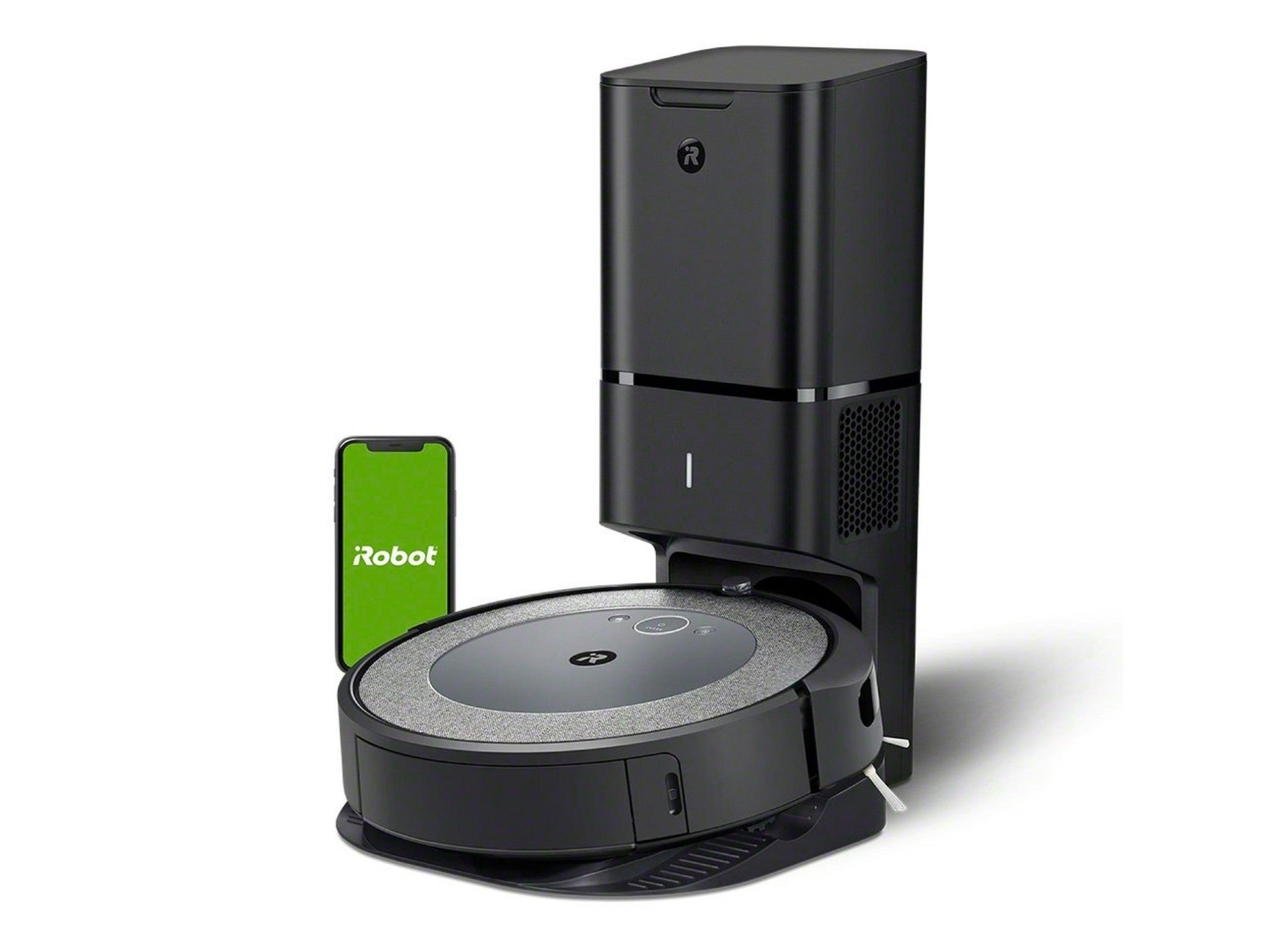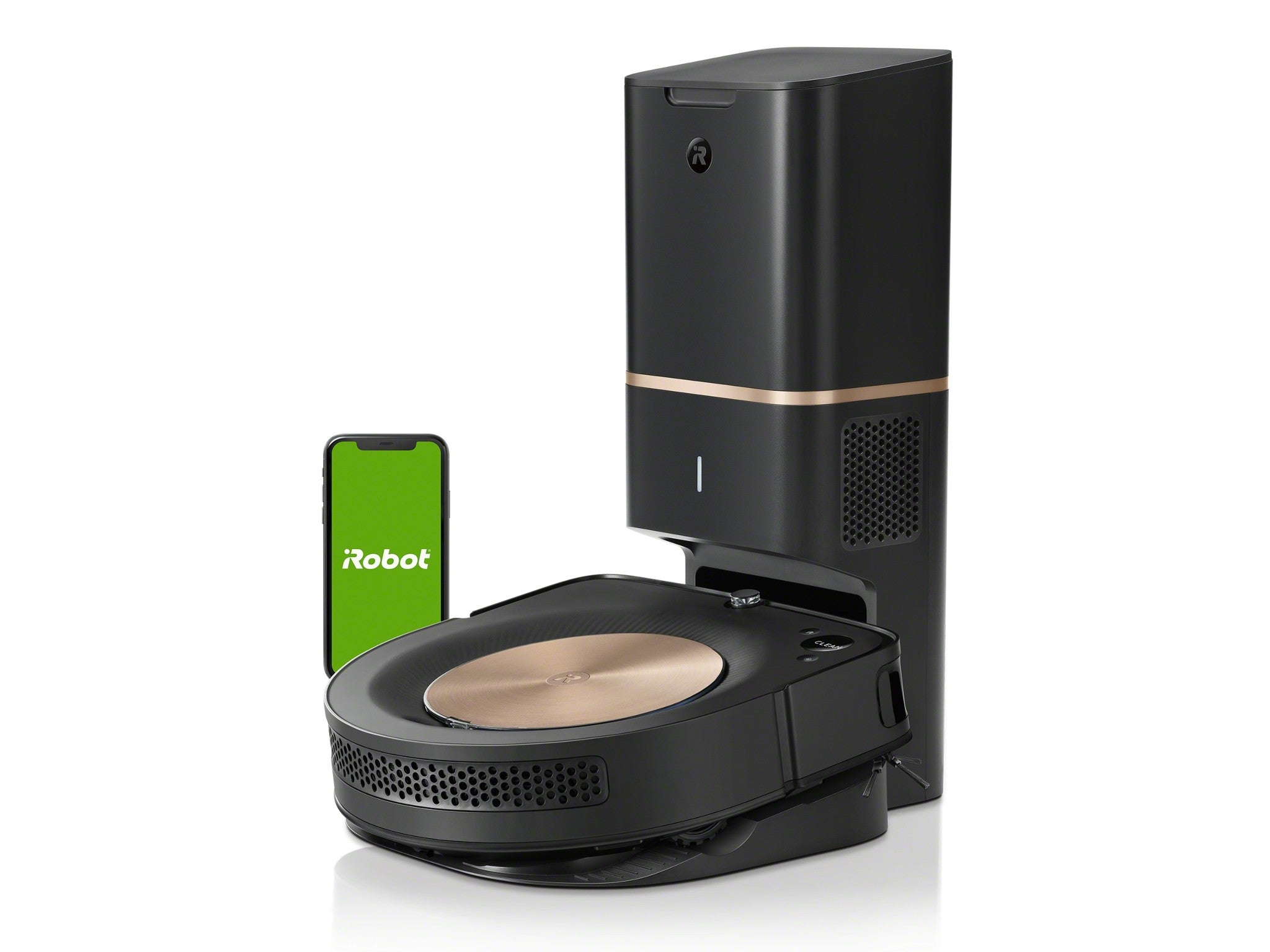
The Independent's journalism is supported by our readers. When you purchase through links on our site, we may earn commission. Why trust us?
iRobot roomba i3+ vs iRobot roomba s9+: Which robot vacuum cleaner is best?
We put these bots head to head to find out if you really need to fork out for a supreme clean

If you were asked to name a robot vacuum cleaner brand, it’s very likely you would say “iRobot”. Now a household name, iRobot’s roomba vacuum cleaners are probably the best known on the market, with nine different models available – not including their robot mop.
Each of the brand’s robots are part of a series, with price points ranging from the fairly affordable 600 series, starting at £299.99, to the newer i series starting at £449.99, right up to the expensive s series, which starts at £1499.99.
However, being the most expensive model doesn’t mean that it is automatically the best – when it comes to robot vacuums, it really depends on your home’s cleaning needs.
All of iRobot’s models work via wifi connectivity and can clean carpet as well as hard floors, but it’s the cleaning patterns, suction power, zoning control and dirt disposal where the key differences lie.
We tested out the brand’s most recent releases, the roomba i3+ and the roomba s9+ – which have a lot of similar features such as high-efficiency filters, voice control cleaning and tangle-resistant brushes – to directly compare the two models and understand which robot is really worth your hard earned money.
Read more:
You can trust our independent reviews. We may earn commission from some of the retailers, but we never allow this to influence selections, which are formed from real-world testing and expert advice. This revenue helps to fund journalism across The Independent.
iRobot roomba i3+

Buy now £599.99, Irobot.co.uk
Out of the box, you’ll get the roomba i3+ robot, the charging base, which doubles up as automatic dirt disposal, one AllergenLock bag pre-installed in the cleaning base, as well as an extra one (this is made from an allergen-blocking material which traps 99 per cent of dust, allergens and mould). You’ll also find an extra filter for the robot – it’s recommended that this be replaced every two months.
One of the impressive recent developments in robot vacuum technology is the ability for robots to self-empty their dustbin. The i3+ is one of the cheapest models currently available which offers this – in comparison, if you opt for iRobot’s s9+ model, which also has the dirt disposal feature, this will set you back almost £1,500. The self-emptying feature is a huge draw for consumers, especially as the small bin capacity of robot vacuums is often the most complained about feature. Automatic dirt disposal means you don’t have to worry about the vacuum not finishing the cleaning job due to a full bin, plus it minimises your exposure to dust and allergens.
The base holds up to sixty days worth of dirt, and the i3+ easily found the base each time it needed to empty its bin, before returning to exactly the spot where it had been previously cleaning. One downside of this is that you need to make sure the robot has easy access to the base by either keeping all of your doors open so that it can find its way back, or moving the base into the specific room that the i3+ is working in to ensure that it will be able to complete the clean.
You do also need to bear in mind that both the i3+ and s9+ need a larger area of your home for its base as they are taller than standard charging bases, so make sure you have a free corner to place it in. Its plain black design is inoffensive and once you’ve chosen a spot for it out of sight, you do soon forget it’s there.
A key difference between the two models is that the i3+ doesn’t have smart home mapping, which the s9+ does feature. You can, however, view on the app a map of where the i3+ has cleaned, how long it took and how many times the bin was emptied. We also found that this vacuum was far quieter than the s9+ (more on that later), meaning you didn’t have to leave the room while it cleaned around you. Its straight line navigation ensured that it vacuumed all floor areas – it had some difficulty capturing dirt from room corners, but the edge-sweeping brush did manage to sweep in the larger pieces of fluff and dust.
The width of the actual robot is slightly thinner than the s9+, so it was able to clean under the sofa during testing, which was a definite plus. The vacuum moved across rooms and different floor surfaces with ease, providing a comprehensive clean, although it clearly worked best on hard floors and low to medium pile carpet. On rugs and high pile carpet it slightly struggled to suck up all of the dirt and dust, whereas the s9+’s suction power enabled it to clean these types of surfaces swiftly and easily.
iRobot roomba s9+

Buy now £1,499.99, Irobot.co.uk
Out of the box, you’ll get the robot, the charging base with automatic dirt disposal, two dirt disposal bags, an extra filter and a corner brush. First released in 2019, this sleek looking robot has an impressive 40 times more powerful suction than some of the brand’s earlier models – comparatively, the roomba i3+ has only 10 times the suction. If you have pets that shed hair in your home or a deep pile carpet, this is where you will really see the difference in suction power between the s9+ and the i3+. The s9+ is noticeably stronger, although it’s worth noting that this does make it pretty noisy to be around while cleaning. iRobot has dubbed its methods the “3-stage cleaning system” – the robot is able to pull in embedded dirt and pet hair from wherever it hides. This consistently provided a deep clean (even when the carpet looked reasonably debris-free to the naked eye), and we found that the dirt disposal base did fill up at a quicker rate compared to the i3+.
Both the s9+ and the i3+ have taken significant steps to be attractive to allergy sufferers. The s9+ robot has a whole system filtration which is designed to prevent tiny dust particles and allergens such as pollen and mould spores coming back into your home during cleaning. The i3+ is equipped with a high-efficiency filter that also captures 99 per cent of pollen, mould, dust mites, and animal allergens.
Unlike the i3+, the s9+ has one flat side to it – iRobot calls it PerfectEdge technology. This means that it’s better at getting into corners and along edges for a thorough clean thanks to its advanced sensors, although we did find it sometimes got stuck when it transitioned across slightly different surfaces, such as a rug on a wood floor. The s9+ also has a handy mapping feature within the app – you can edit the maps that the robot generates of your home, label them and even create “keep-out” zones, for a truly personalised cleaning experience. Once the maps are created you can tell the robot to clean a specific area using Google Assistant or Alexa, which is definitely a nice to have feature, but not something we particularly missed when using the i3+.
The verdict: iRobot Roomba i3+ vs iRobot Roomba s9+
Although both robots featured automatic dirt disposal, there were some clear differences in the design and performance of the two models. We were impressed by the sheer power of the s9+ and its room mapping capabilities, and it was definitely the better looking of the two machines. If you’re not a pet owner or allergy sufferer though, it’s unlikely you’ll miss the greater suction power of the s9+, especially when you consider the large difference in price. The i3+ vacuumed all areas comprehensively, was relatively quiet while cleaning and emptied its bin automatically every time, with no human intervention.
Ultimately, if you don’t have deep pile carpet or pets and you’re looking to have a no-fuss cleaning schedule in your home we would suggest that the iRobot roomba i3+ is a better choice.
Voucher codes
For the latest discounts on vacuum cleaners and other household appliances, try the links below:
We also tested the Dyson V7 and Dyson V11: Read our review to find out which came out on top